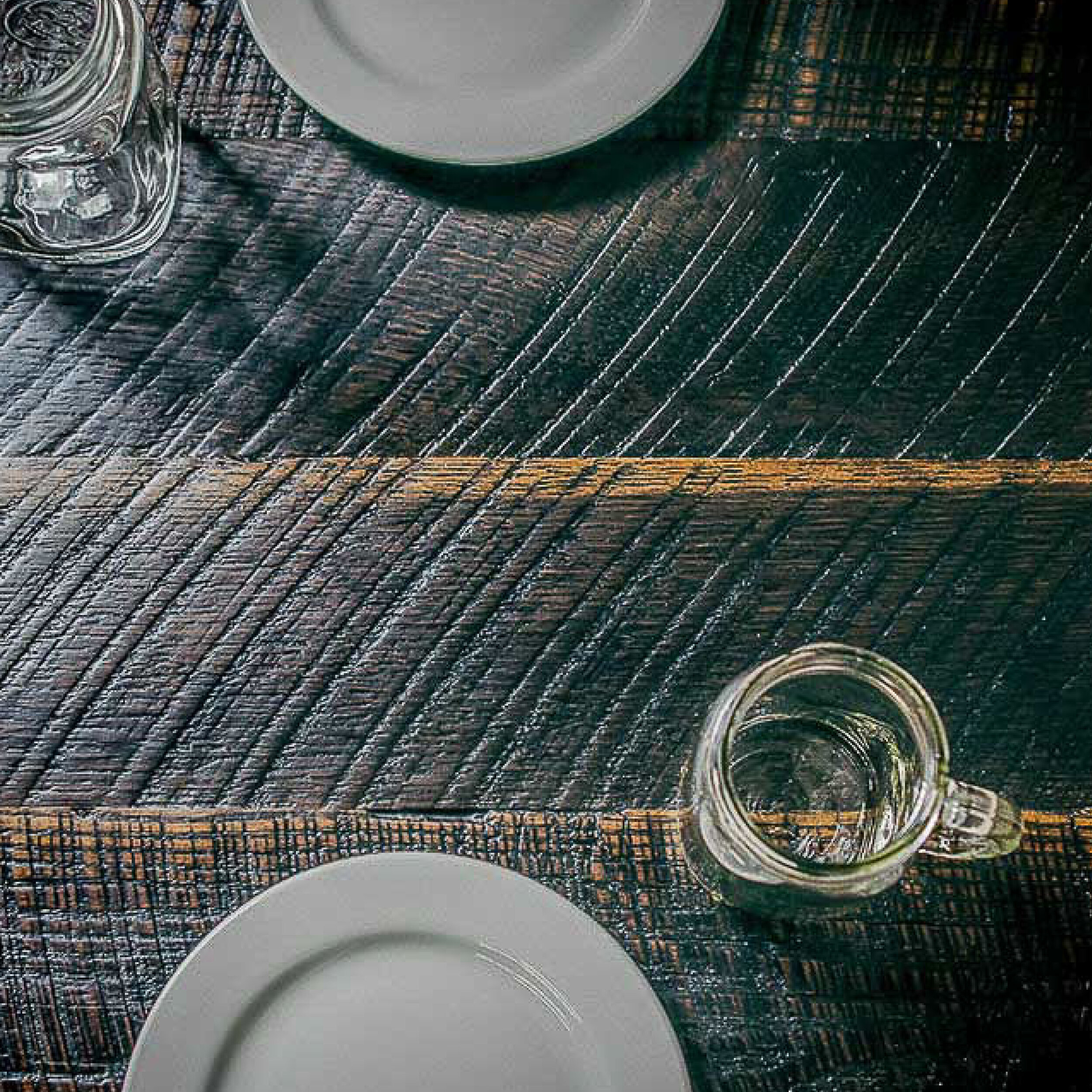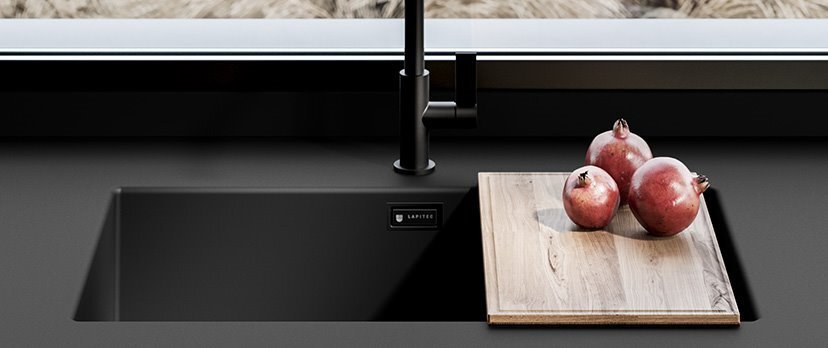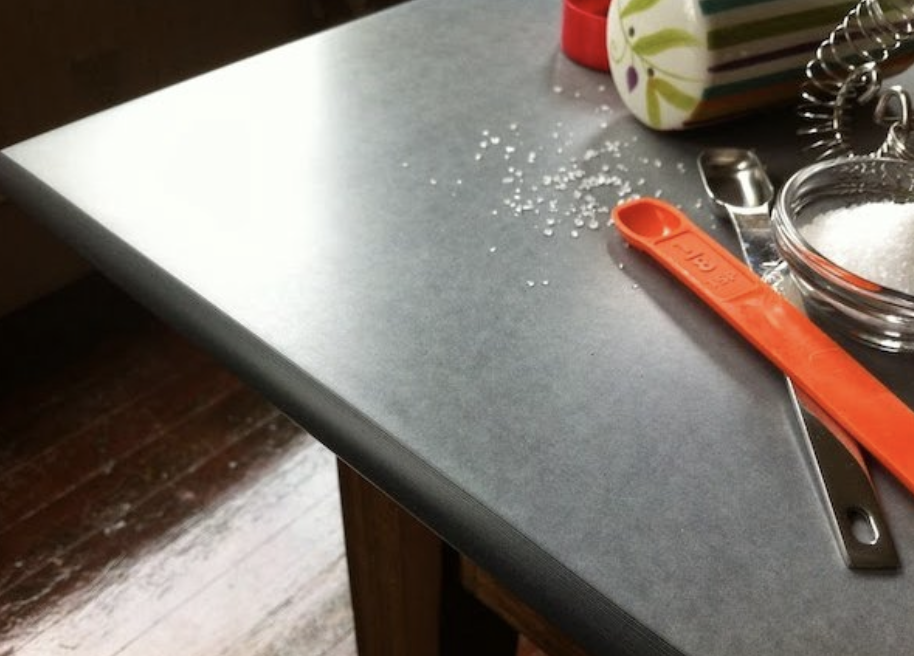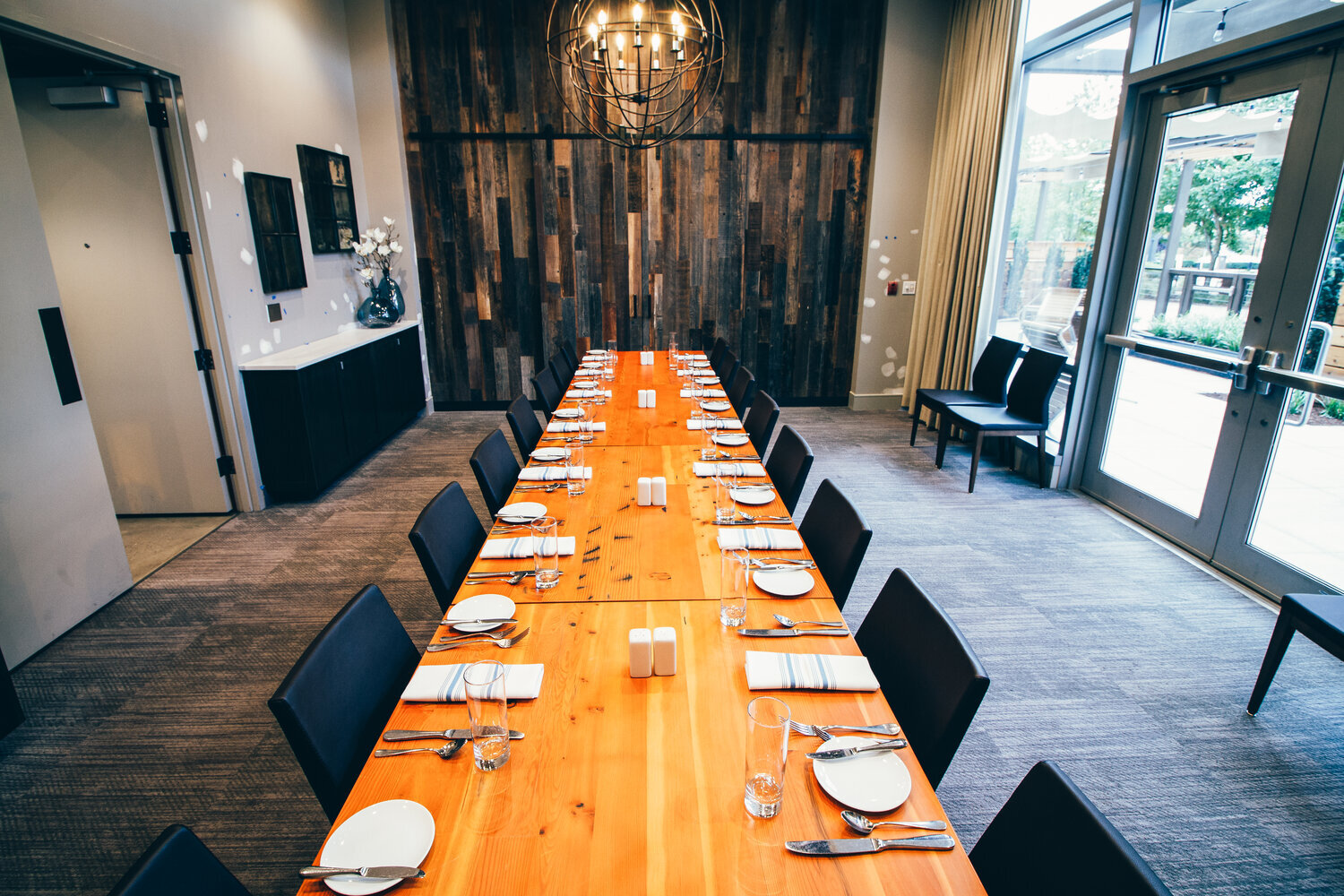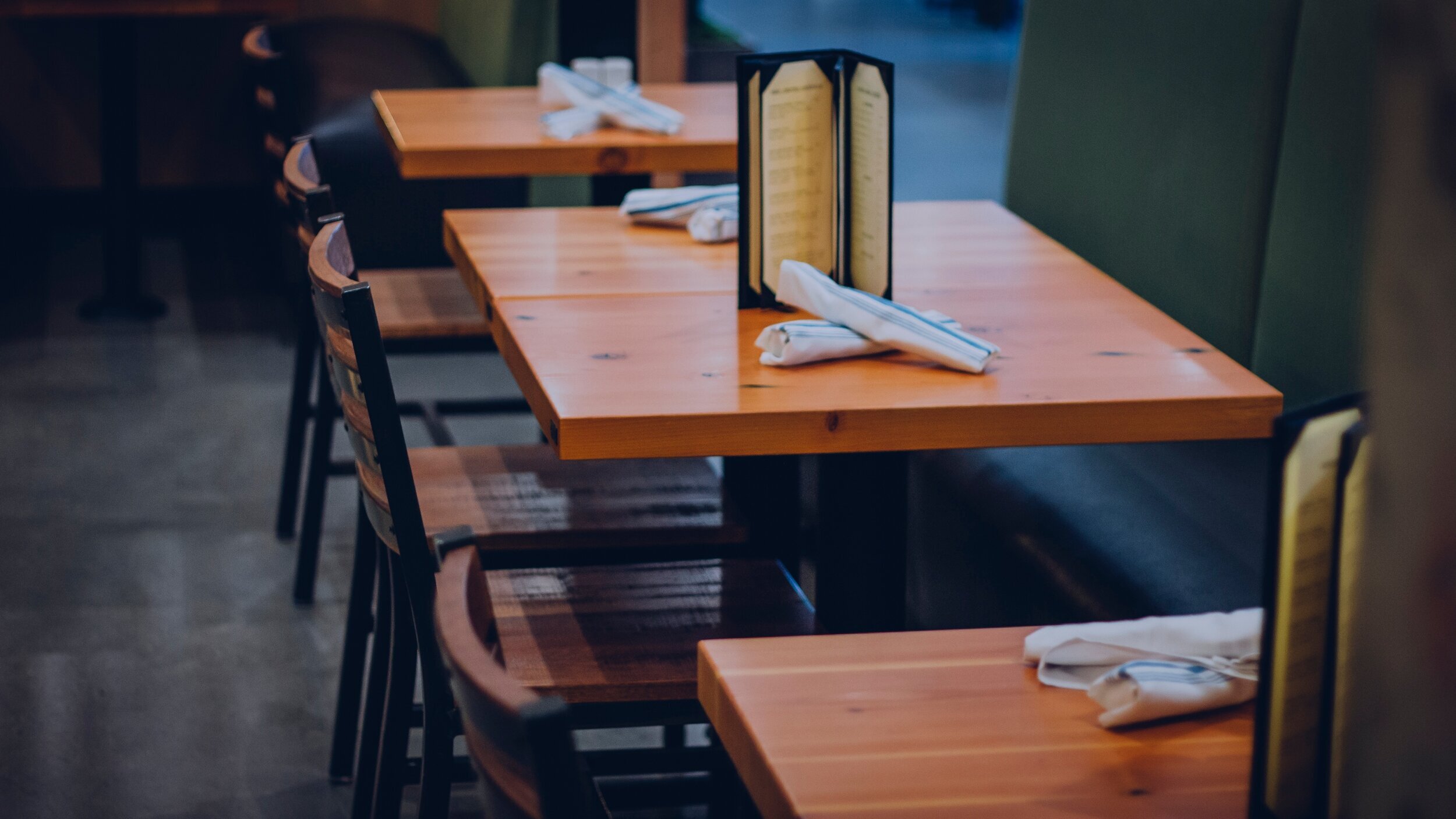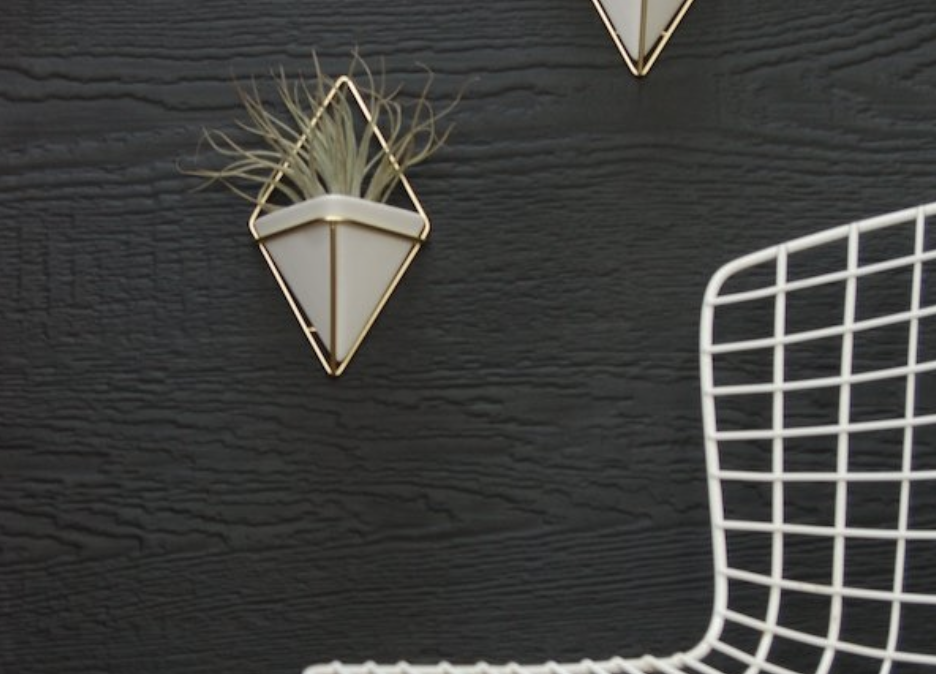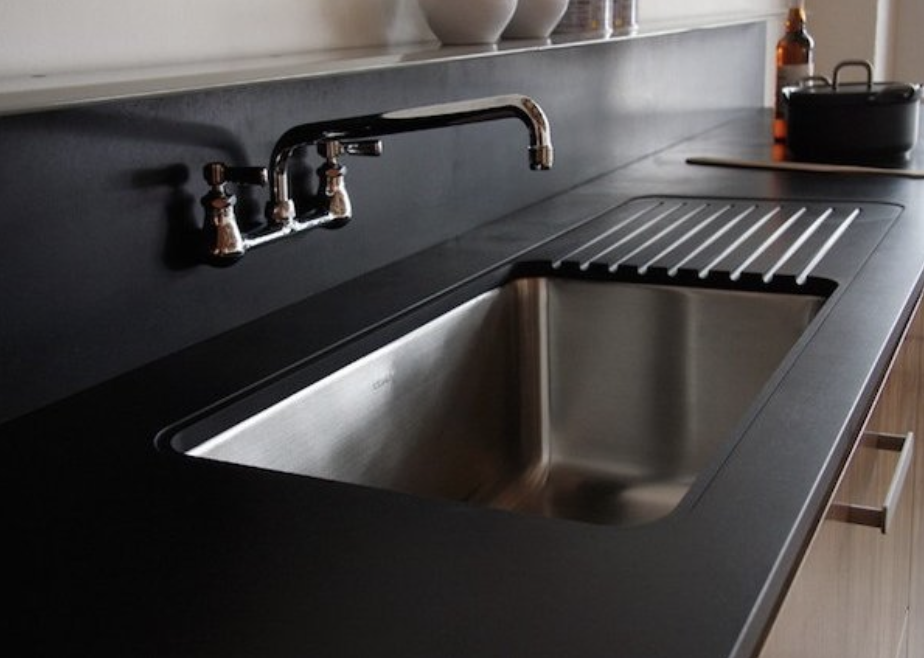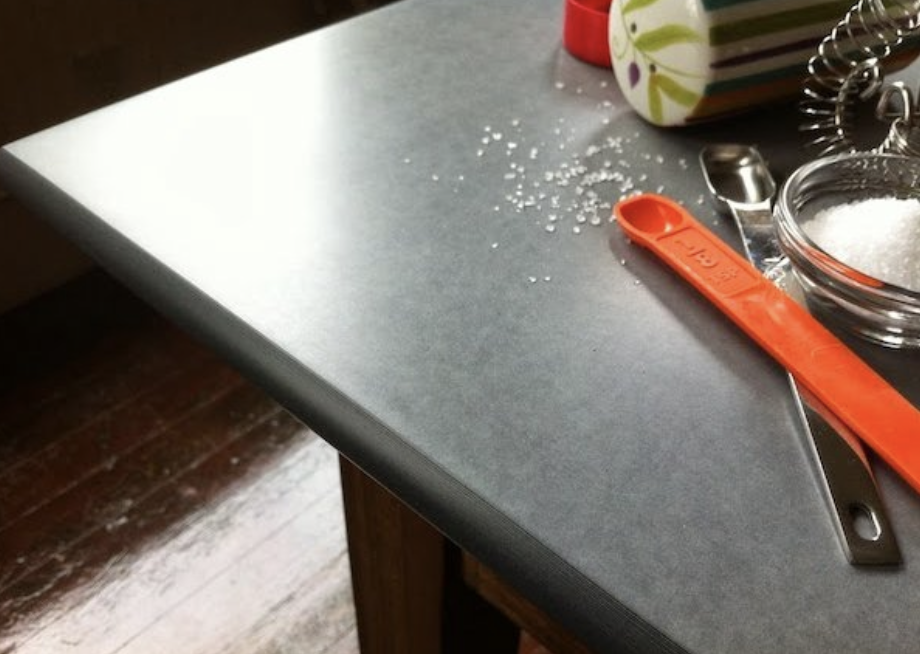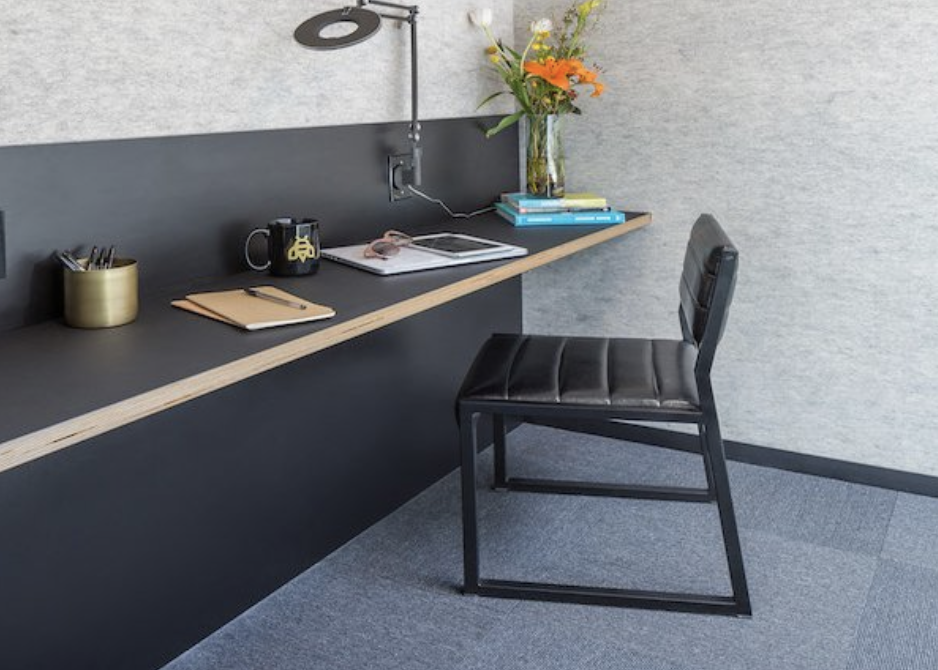How to Specify Sustainable Countertops for Commercial Construction Projects
Find centralized info on how to specify sustainable countertops for commercial construction projects. Info on how to spec reclaimed wood countertops , sintered stone countertops, and paper-product countertops.
While stone, quartz, and laminate are materials commonly used in commercial countertops, tons of other options exist that are more sustainably focused. We interviewed manufacturers of wood, sintered stone, and paper-product countertops. If you’re looking for even more options that are easier on the environment, look no further.
Reclaimed & Sustainable Wood Countertops
Construction & Application
Reclaimed wood from Viridian Wood is a 100% FSC Certified, post-industrial product. They source their reclaimed wood from multiple sources: their Douglas Fir comes from old warehouse beams and building deconstruction; their Barrel House line uses rustic wood from grain silos in Washington state; and they reuse dimensional lumber from Port of Portland. Wood is beautiful, adds warmth, texture and character to a space, and is also a relatively highly durable material. In addition to countertops, wood can also be used for bar tops, shelving, benches, tabletops, walls, and more.
In addition to reclaimed wood, Viridian Wood also uses domestically sourced sustainable wood species from local distributors: white oak and walnut. These wood species are not rare, and are not over-logged, making them a more sustainable option than other species such as Ipe, Teak or Mahogany. The white oak and walnut woods can be specified as FSC Certified, but be aware that this will add around 20% to the cost and increase lead time.
A third, more budget-conscious option for wood countertops is Designers Edge, which includes laminate and veneer tops. This product is less durable than the solid wood products, and therefore about half the cost. Designers Edge uses high-quality, locally sourced baltic birch plywood, which is both FSC-Certified and NAUF compliant. Standard laminate options come from Wilsonart’s line, but any laminate can be specified if desired. The veneers are procured outside of Viridian Wood, but are pressed and finished in Viridian Wood’s factory in Portland, Oregon.
The maximum width of a piece of reclaimed wood is 48”, while the maximum length is 120”. Longer or wider pieces can be created by combining multiple planks. Countertops can have waterfall edges and mitered corners, if desired. Be aware, there will always be a level of variation from board to board. It’s always best to ask your local rep for lots of imagery and physical samples to understand the variation, and consult both the website and the samples (which are 6x6” - not large enough to understand the variation). You can also ask your local rep for locations where their product is installed to see it in person, as lots of restaurants across the US use this product.
Wood countertops can be used in many commercial market sectors, and are most commonly specified in restaurants, hospitality, higher-education, multi-family housing, senior living, and workplace. This sustainable countertop material is built to last. There is currently no recycle program for these countertops, however they can be repurposed again for other uses such as furniture, stair treads, shelving, and more. Pricing for this material can range from roughly $35-75 per square foot, with Designers Edge at the low end, and live-edge walnut at the high end.
Durability & Maintenance
Viridian Wood’s wood products are built to hold up in restaurants. If they can survive these applications, they can survive almost any commercial application. The conversion varnish used on the wood is Greenguard certified, and is meant to be wiped and cleaned constantly using non-ammonia based, standard cleaning products. The varnish holds up to general restaurant wear and tear and cleaning, but dragging sharp objects such as forks may scratch the surface, which can be refinished.
A quick clarification: When you think of wood countertops, you may imagine butcher block counters. Butcher block is usually made of thinly sliced pieces of a single species (often maple) laminated together, with the wood grains oriented upward and topped with an oil finish. The strength of the wood grain orientation was originally intended to handle the pounding of a butcher’s meat cleaver. The wood grain in wood countertops runs parallel to the counter, resulting in more water-resistance, but less impact-resistance than butcher block counters. Imagine a bundle of straws - if you were to step on the bundle while the straws lie parallel to the ground, they would crush under your foot. If you poured water over the bundle, the straws would get wet, but it wouldn’t go through the straws themselves. If you were to stand the bundle of straws perpendicular to the ground and step on the bundle, it would take much more force to even make a dent in the bundle. However, if you poured water over the top, water would run straight through. Wood countertops represent the former straw bundle (less impact-resistance, more moisture-resistance), and butcher block the latter bundle (less moisture-resistance, more impact-resistance).
Wood countertops are best for prep areas or decorative counters without sinks. This is because the exposed end-grains of the wood planks are permeable, and can soak in moisture / water (through the straws!), so any sink cut-out (including drop-in and undermount sinks) is risking water entering the wood and causing water-damage. Moisture is not an issue for the top surface of the counters, however. These countertops are somewhat heat-resistant (hot coffee cups are okay), but trivets are recommended for hot skillets or tea kettles, for example.
At this time, wood countertops are recommended for indoor applications only.
Images courtesy of Viridian Reclaimed Wood
Lapitec Sintered Stone Countertops
Construction & Application
Ever heard of Lapitec? Me neither, until I started researching for this article, and I’m excited to share the amazing attributes of this product! Lapitec is a sintered stone product made in Italy. Sintering is a firing process that changes the molecular structure of a material. This process happens naturally underground through high heat and pressure to make metamorphic stone. Breton recreated this process using their machinery, so stone can be created in days and weeks versus millions of years!
Lapitec is made of 100% natural minerals compacted and bonded together through the sintering process, replicating natural stone. Anything you can do with stone (finishes, edge detailing, integrated sinks…), you can do with Lapitec, and then some. It is a homogenous product, meaning there is no layering and the veining goes all the way through the product. The colors come from natural metal oxide pigments; no glaze or artificial color is added. This product comes in three thicknesses: 12mm, 20mm, and 30mm. Lapitec falls somewhere between solid surface and quartz pricing.
This stone product can be used for partitions, floors, horizontal surfaces, roofs, facades, stairs, pools, firepits, steam showers, paving, indoor fireplaces, outdoor kitchens, even lab work surfaces as they are highly chemical resistant! Simple soap and water can be used to clean, and because it is chemical resistant, bleach-based products can also be used.
What are the advantages over natural stone?
-Lapitec is highly scratch-resistant, comparable to Granite which is the most dense natural stone (rating a 6-7 on the Mohs Hardness Scale).
-Lapitec is non-porous, meaning it doesn’t need any sealants and it is inherently anti-bacterial. It can be used both indoors and outdoors, as it is thermal-shock resistant and UV stable.This product is impact-, stain- and heat-resistant, something natural stone can’t always claim depending on what type. You can place hot pans on this surface, no problem.
-The qualities are consistent across all Lapitec collections, whereas different stone types have varying qualities.
Check out this comparison of natural marble to Lapitec.
Sustainability
Lapitec is rated Greenguard Gold, contributes to LEED credits, is Food Safe & Kosher Certified. Read more about their sustainability goals and certifications here. This product is fully recyclable and reversible, meaning because it is made of 100% compacted natural minerals without any binders, it can be ground up and reused to make new Lapitec. The manufacturing occurs in Northern Italy, located next to a free-range organic dairy farm - no runoff issues here! Another incredibly important health aspect is that Lapitec is Silica-free. Silica is a naturally occurring mineral, and can cause permanent disease and can even be deadly when inhaled during the manufacturing process.
Image courtesy of Lapitec
PaperStone Countertops
Construction & Application
PaperStone is a paper composite sustainable countertop product made of up to 60% FSC-Certified recycled paper by weight, resins and natural pigments. This product is created by cutting sheets of fibrous kraft paper, soaking them in non-toxic phenolic resin to fully encapsulate the paper fibers, adding ultra-saturated pigments, stacking hundreds of sheets (exact number depends on the thickness), and applying heat and compression to cure into a solid product. The pigments used offer better UV stability than other dyes. PaperStone never has and never will contain silica. It is a domestic product, manufactured in Washington state.
Thicknesses range from ⅛” to 1-¼”. There are also several sheet sizes available, which reduces waste by only ordering the amount the project needs. If there is excess material, it can be crafted into other items like furniture or tools! PaperStone is competitively priced countertop material, similar to a low- to mid-range quartz.
Besides countertops, PaperStone has other uses: partitions, interior cladding, casework, tabletops, furniture, horizontal surfaces, retail displays, exterior rain screens, lab work surfaces, and more. In fact, PaperStone was founded by Paneltech, who manufactures lab benching materials. It is recommended for indoor-use only, with the exception of the exterior cladding product. This product is also popular in van build-outs and tiny homes, because it is a light weight material. PaperStone is also warm to the touch, compared to cold stone countertops.
The classic Solid Color PaperStone is a through-body product, meaning the color goes all the way through the product. You can specify virtually any edge profile, and it can be cut with woodworking tools. It’s an easy material to work with, similar to a solid surface.
Designer Series Panels include the lighter color options, and are similar to the Solid Color panels, but there are alternating layers of resin-soaked kraft paper and melamine, resulting in a striping element at the edges. This does mean this product has lower recycled content than the Solid Color Panels. The Designer Series offers higher UV resistance.
CoverPly, a more economical and lightweight product, has a thin sheet of PaperStone adhered to a Baltic Birch plywood core, similar to laminate. CoverPly is more durable than standard laminate countertops and will not chip at the edges as easily.
PaperStone came out with a new product that replicates Shou Sugi Ban (charred wood) texture, called CharredStone. This product is accent or feature walls, with the durability of PaperStone!
Images courtesy of PaperStone
Durability
PaperStone is a durable product in many ways. It will not crack, and it can tolerate heat up to 350 degrees. Once installed, PaperStone recommends finishing the material with PaperStone finish which is glossy in appearance, or Osmo oil which gives a matte appearance. It is built to last a long time and to stay out of the landfill, so as the product wears, it can be refinished with a palm sander and resealed. Any scratches can be sanded out. Because PaperStone is a low- to non-porous product, it is mostly stain- and water-resistant, making it an appropriate product for countertops with sink cut-outs; drain boards can also be routed into the material. Moisture-protection can be increased by using Beeswax spray. The only major moisture concern is when PaperStone is mounted vertically on walls - moisture can get trapped between the substrate and the PaperStone, causing it to warp. Contact your local rep to ask about recommendations if you are going to use this material for a vertical wall application.
Author
Maddy Gorman, NCIDQ | Interior Designer
Disclaimer
While we hope you find an incredible amount of value in this article, we surely haven’t been able to cover the broad swath of applications and particular circumstances that will come up on every project. We encourage and suggest that you should connect directly with your manufacturer’s rep regarding the specific specification needs of your project.
You can find your local manufacturer’s rep in the world’s largest commercial construction rep directory here. Grab their contact information, or send a message right on Source. Happy specifying!

